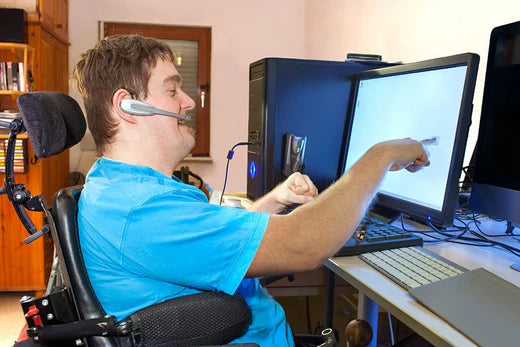The importance of the daily routine
But before we get into the suggestions, first a word on what daily routines mean for our wellbeing. Many of us don’t even consciously think about routines – we simply go about life and pick up habits and ways of doing things that are practical for our own needs. If you stop and think about what your average day consists of, there’s probably hundreds of small activities that are the same each day, and often in the same order.
We don’t think about these often because they just happen. But when someone experiences a loss of mobility, these activities most definitely are thought about, as they become more of a challenge to conduct.
As such, it’s easy for families and the individual to lose these daily routines and allow the mobility impairment to dictate large changes in their life. This loss of control can be tremendously unsettling. An occupational therapist’s job is often centred around assessing and planning a way for their clients to live their daily lives how they want as much as possible. Their work involves determining the level of mobility impairment versus the tasks they wish to do as part of their daily routine – then bridging the gap of mobility using a combination of assistive technology, human care and potentially physical rehab or training of the individual.
Having these routines in place helps to build a feeling of independence and self-determination – something which many feel they lose through disability. The daily routine also can help to alleviate stress around the unknown – confidence that there’s a daily or weekly plan for doing things a certain way.
1. The ability to communicate with multiple family members and friends
Depending on the level of physical and cognitive ability, communication may be enabled through:
- In person interactions
- Online chat and messaging (potentially engaged with via voice command)
- Video calls
- Phone calls
Take the time to figure out the most practical and effective means of communication – this deserves as much attention as any other activity.
2. A comfortable transport option
Comfort in transport is crucial because it empowers the mobility impaired individual to seek travel more readily and include out of home activities across their week. When we aren’t confined to our homes, it helps for a more interesting and fulfilling lifestyle. It’s the job of the occupational therapist and the individual’s loved ones to find a way to create a transport plan that works for everyone.
3. Accessible planning around school, work and hobbies
Before attempting to visit these places, do a mission to determine the access.
Consider things like:
- Are there ramps up to entrances?
- Do entrances/exits have good clearance width-ways to fit assistive equipment like a wheelchair?
- Does the building allow for drive-up access?
- Does the internal access of the building have ramps and lifts to get everywhere quickly?
- Have you identified the fire exits and their safety for a wheelchair?
Once you’ve had a look, you can chat to the school, business or someone from that place and discuss the needs you have. In many parts of the world, building regulations exist around many types of structures designed for community / public use that makes them accessible. If the week plans involve visiting other homes, you may need to do a bit more planning.

4. Assistive technology for bathing
But if you’re looking for a complete bathroom mobility solution that removes the need for any of that, the Showerbuddy range of products is ideal. The Showerbuddy supports the whole process of using the bathroom from moving around the space, using the toilet, washing up and of course, showering. The range has versions of the chair to suit different user needs and bathroom configurations.
When solutions like this are introduced, families or the carer greatly reduces their risk of injury during manual transfer. But as importantly, these chairs allow many users to enjoy moments of bathroom use alone, earning back vital privacy and dignity.
5. Remove rugs and mats
Check these places in the home:
- Entrance the house both in front of the door outside and in the entrance way.
- Rugs in the hallways.
- The lounge
- Bathmats
While you can keep rugs in places where your loved one won’t have to move through, it’s a good idea to keep a clear thoroughfare around the home.
6. Mop and dry hard floors before use

7. Bring a commode unit bedside
8. Decision making for themselves
Further reading
Enjoyed this article? You may be interested in these resources online:
- 10 daily solutions to make life easier if you’re disabled – Disability Horizons
- 10 Things to Help Disabled People Make Life Easier – Wheelchair Transit
- Living with a disability – Age Concern NZ


























![Toilet Training A Young Child With Mobility Challenges [And How A Shower Chair Can Help]](http://shower-buddy.com/cdn/shop/articles/toilet-training-disabled-child_520x500_a90e5234-d372-435d-aa56-8da15dd3836c.webp?v=1722557239&width=460)
























